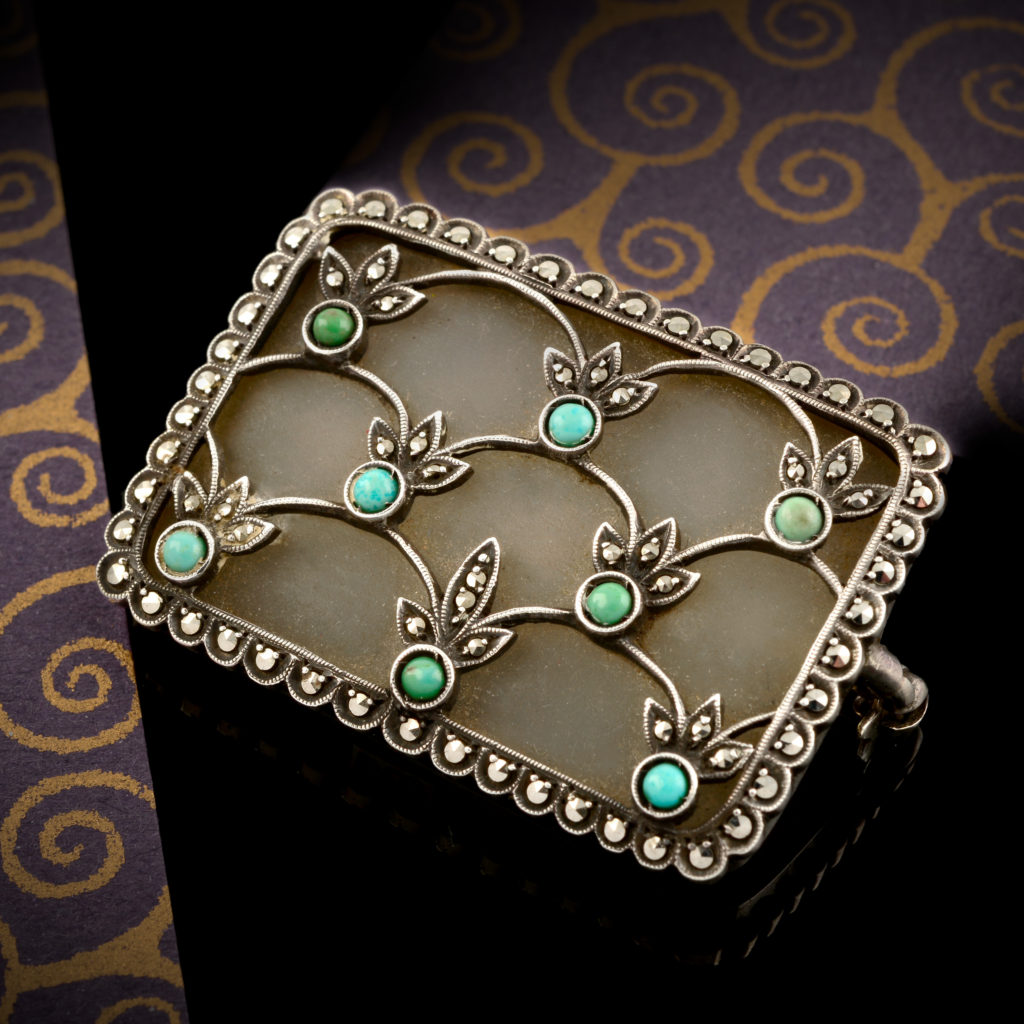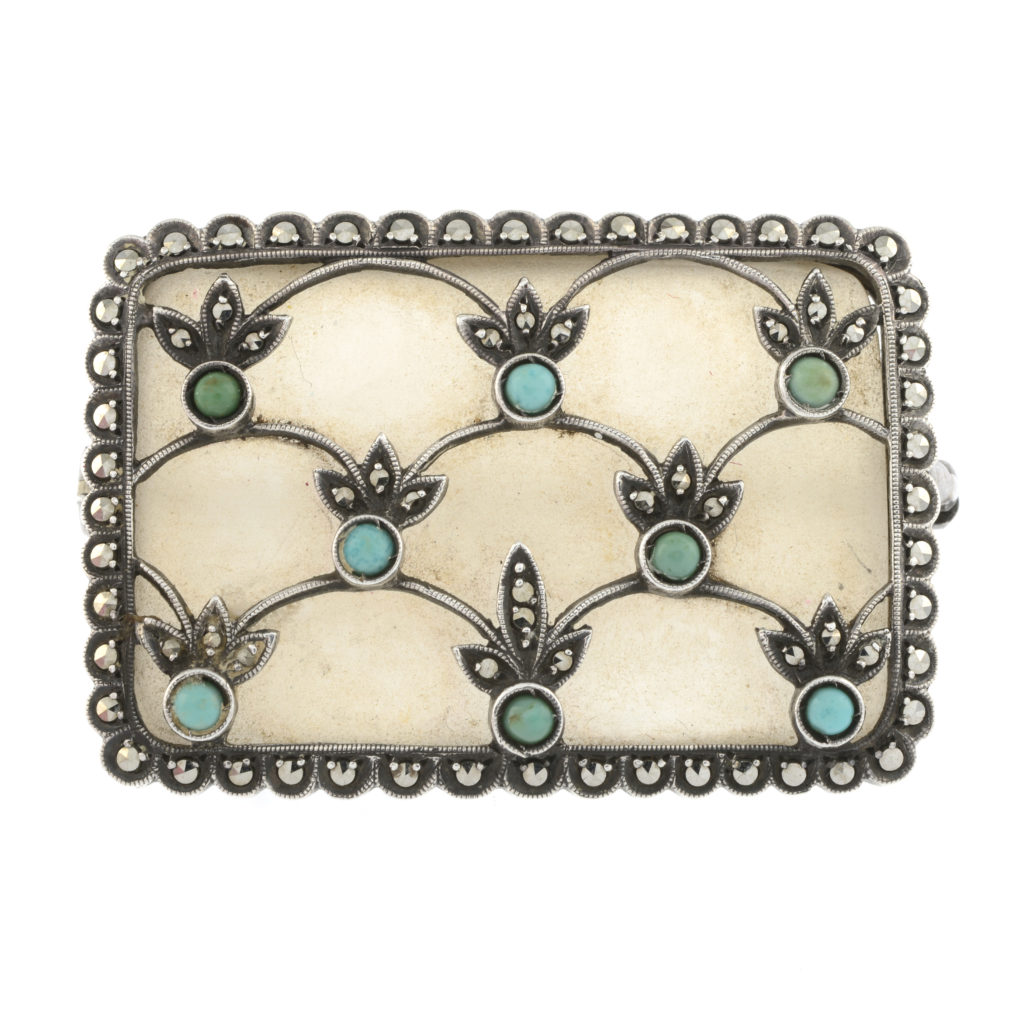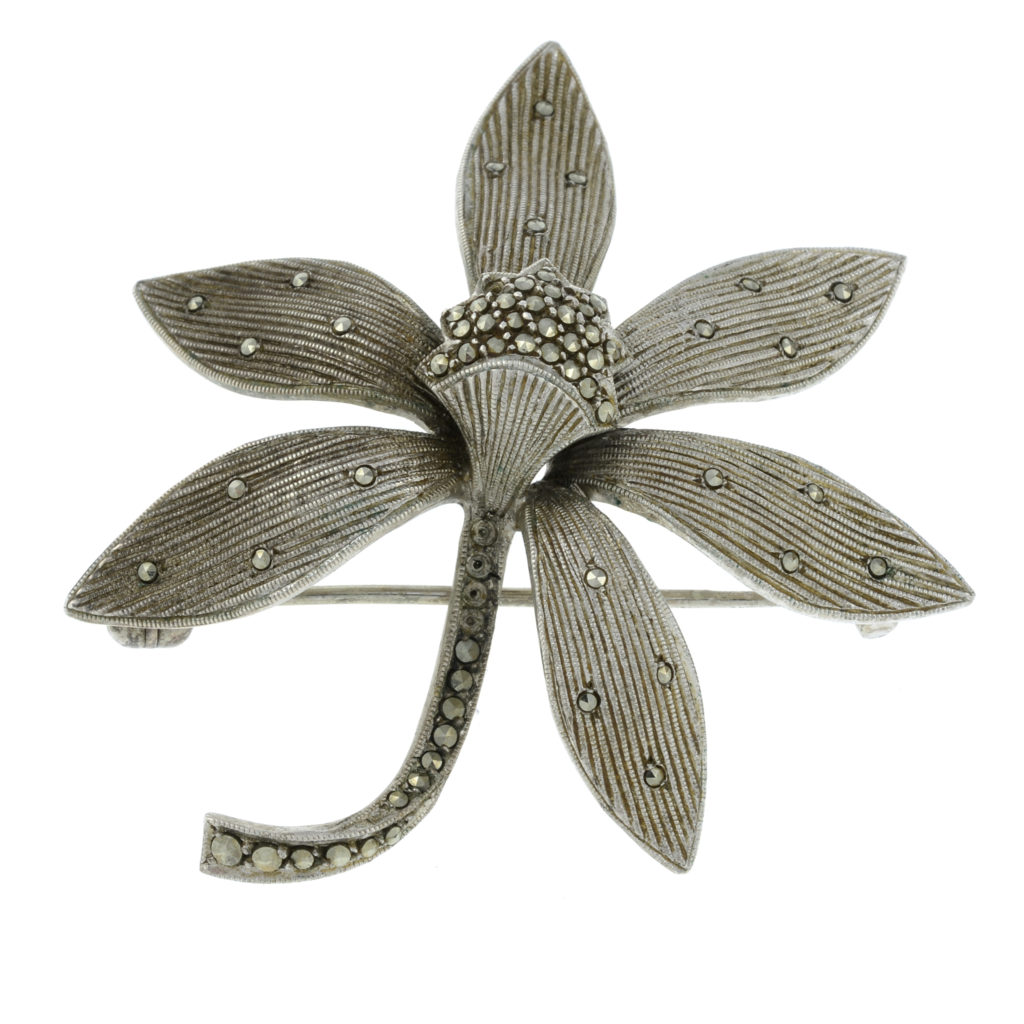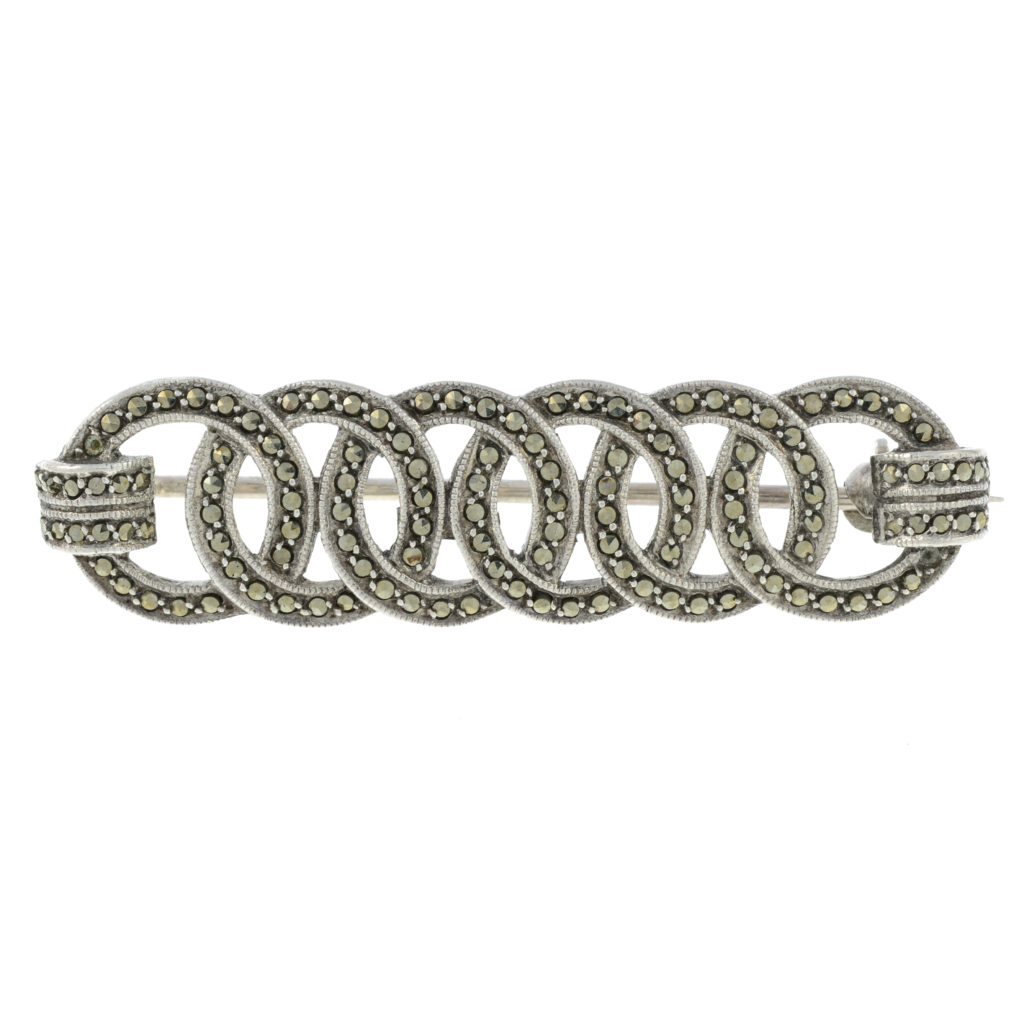Theodor Fahrner jewellery is best known for its typical Art Nouveau designs of the late 19th and early 20th centuries.

Theodor Fahrner was born in Pforzheim between 1859 and 1868. He trained as a steel engraver and went to the Pforzheim Commercial Arts Society to train in the arts. When he took over his father’s ring factory upon his death in 1883, he combined these skills to produce jewellery in the Jugendstil tradition, employing materials such as enamel, marcasite and semi-precious stones. Many of his designs were based on organic shapes and animals, a typical theme of the time.
Towards the end of the 19th century, Fahrner had begun to collaborate with other artists and in 1900 exhibited at the Paris Universal Exhibition where he was awarded a silver medal for his work, created alongside Max J Gradl. The resulting publicity marked an upturn in the fortunes of the company.
As the century began, he established the company’s TF trademark and the company began exporting into Britain. They also began collaborating with other Jugendstil (or Art Nouveau) proponents, including Murrle Bennett and Georg Kleeman.
When Theodor Fahrner died in 1919 the company was bought by Gustav Braendle and became known as ‘Gustav Braendle – Theodor Fahrner Nachfolger’. In the 1920’s the Art Deco style was at its height and the pieces produced by the company in this style are highly collectable.
Theodor Fahrner in Auction
Jewellery & Costume Jewellery Day One | Wednesday 16th October 2024
Jewellery & Costume Jewellery Day Two | Thursday 17th October 2024
Bags of Costume Jewellery | Friday 18th October 2024
Viewing times (ID required):
Birmingham
Tuesday 15th October 10:00-16:00
Virtual viewings are available by request. Virtual viewings are the ultimate personal shopping experience. Using Zoom, you can ask us whatever you need to know to buy with confidence. Find out more here.
Valuations
Our valuations are free, with no obligation to sell with us. Our experts will value your item with an estimate, so you can find out what it could achieve at auction.
The process is simple. You can fill in a form online or book an appointment to visit either of our offices in Birmingham or London. Virtual valuation appointments are also available.
Find what you’re looking for
Make sure you don’t miss finding that special something by signing up to our email alerts. You’ll be the first to know when catalogues become available, receive invitations to special events and preview the hottest lots from our auctions, plus much more.
Why not use our free personal shopping service? Sign up for lot alerts and tell us exactly what you are looking for. Each time we upload a catalogue, we search for your keywords and email you lots matching your interests. Your personalised email will include images, lot descriptions and auction details.
















